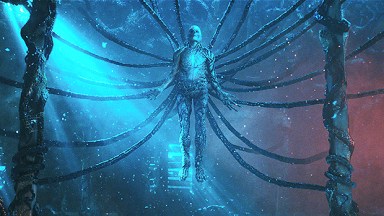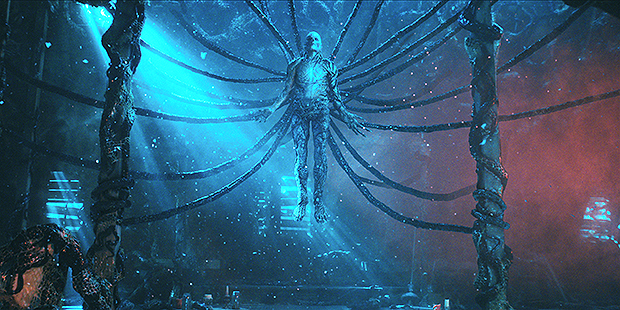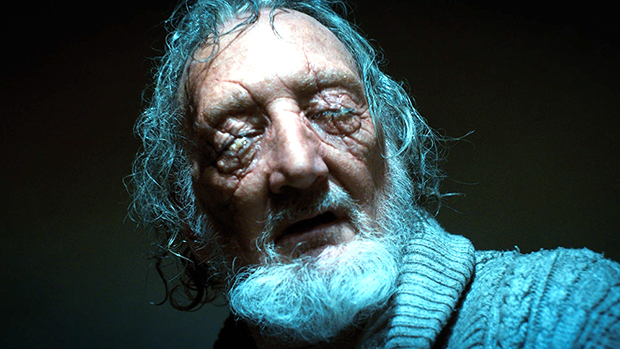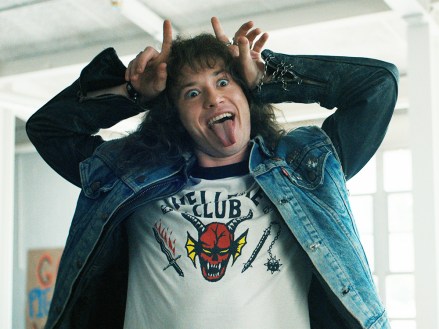
‘Stranger Things’ Vecna’s Transformation Process Explained: Exclusive – Hollywood Life

View gallery
The big Vecna reveal was just as epic as Stranger Things fans expected. In the final episode of Stranger Things season 4 Volume 1, Vecna was revealed to be none other than Jamie Campbell Bower’s Henry Creel, a.k.a. One. Turns out, Vecna wasn’t just created through CGI. This villain was completely real, with Jamie transforming into the Stranger Things monster every time he needed to be onscreen. HollywoodLife spoke EXCLUSIVELY with prosthetic makeup artist Barrie Gower about Jamie’s incredible transformation.

“Usually doing a character like this, you would have a stunt Vecna as well. You would have your actor who might play a couple of headshots, a couple of parts here and there, and then you would have a double with the same physique, who would do the rest of the role and do all the stunts. Jamie did absolutely everything,” Barrie revealed. “He did all the stunts as well. Anything you see Vecna in Stranger Things for was totally Jamie. We shot with him around 20 to 25 days. We did two makeup tests with him, and every day we’d do the makeup application. It’s a brand new set of appliances every day. He’s covered head to toe in prosthetics. There are about 24 to 25 different appliances that sort of overlap each other. Everything’s glued and adhered to the skin with a medical adhesive. It’s made out of silicone rubber, and we have other parts made out of a foam latex, lighter material as well.”
Barrie’s team included Duncan Jarman, Mike Mekash, Eric Garcia, and Nix Herrera. They helped him complete Jamie’s nearly 7-hour metamorphosis into Vecna each time. “I think the first makeup application we did with Jamie was 8 and a half hours to get him into Vecna from start to finish gluing him in,” Barrie admitted. “The more you do a makeup application, the more you can start to chisel that time down. Usually, with a fairly extensive prosthetic makeup, if it’s like head and shoulders or whatever, you will do it day in, day out, day in, day out. It might be like a three or four-hour application, which you can fine-tune and get a good hour or so off of the makeup time. But with Vecna because it was such long hours, we might start at like 2 or 3 a.m. in the morning, and then by the time we’ve shot all day and by the time we’ve wrapped, it would be like a one and a half hour de-rig to take him out of the makeup at the end of the day. We might be done by 10 or 11 p.m. We would usually shoot day on, day off, so we didn’t break anybody’s turnaround. We could just rest the following day. We were super lucky to work with Jamie, who I think might have done a little bit of prosthetic work before. It was a 5-member team. It was us and Jamie. He worked so seamlessly with us that the makeup application I think we eventually got it down to about 6 hours 21 [minutes]. That was our record. We chiseled a couple of hours off, but it got to the point where it was just this orchestrated dance that we used to do, the four of us and Jamie. You’d start sitting down, get the ballcap on him, start getting the pieces on, stand him up, get a few more pieces on. We had a massage table that we used to lie him down on to get his back on, and then we’d flip him over to get his front on, stand him up, get his legs on, get his arms on. It was a well-oiled dance where Jamie knew where he had to put his head, when he had to lift his arm up, when he had to lie down, when he had to do this. It almost got to the point where we weren’t even speaking to him saying what we needed to do next. We wrote down this dummies guide of where we needed to be by a certain time, so we didn’t lose time. We never ran over any days, and we managed to just save a bit of time in the end.”
During the transformation process, Jamie was dedicated to getting into the mindset of Vecna. “We would be listening to certain types of music in the makeup trailer. We would start off with a lot of thrash metal. We would get a lot of heavy metal in there, a lot of death metal going on. Maybe it would get a little bit lighter towards the end of the application. We’d end on something like Marilyn Manson. We’d have podcasts on. We’d watch documentaries. He’d be watching horror films. He’d be looking on YouTube and seeing seances. We’d be looking at all kinds of supernatural things, which would get us all into character. But it was always very light-hearted.”

Barrie noted that Jamie never “complained once” when it came to the grueling makeup process. The appliances used to create Vecna — specifically, the head and shoulders — were “about 6 to 8 kilos just for that piece. And then it’s a full silicone chest, a full silicone back, foam rubber this, that, and the other. It’s an awful lot of weight that he was wearing every single day.” Jamie used a mechanical left hand, which “moved and articulated perfectly with Jamie’s hand.” Barrie’s team worked alongside visual effects and Jamie to make sure this looked seamless. “We never had a complaint out of him. He was a total hero,” Barrie said.
The prosthetic makeup artist, who has worked on shows like Game of Thrones and Chernobyl, admitted that it was “much quicker” to get the appliances off. However, it was “still a really lengthy process” for everyone involved. “With all this stuff being adhered to the skin with a medical adhesive, you can’t just peel it off,” Barrie stressed. “It’s not quite Mrs. Doubtfire where you can just lift it off. In the past, we’ve had actors and stunt guys come in, and they’ve tried to take their own prosthetics off. It can take the top layer of skin away with it, so we have to painstakingly remove everything with a mineral oil. It took the four of us the best part of about an hour and a half to get Jamie out each night. But it was a really jovial process in the evening. We’d have some really upbeat music on, and we’d have treats and snacks. We’d be enjoying ourselves knowing we’ve got a day off tomorrow. It was always a really good process.”

In addition to Vecna, Barrie and members of his team also did the prosthetics for Robert Englund’s Victor Creel, who has scarred eyes. Barrie admitted that working with Robert was a “career-high” because he’s a massive Freddy Krueger fan. “We had him in the makeup chair for about two hours to do his makeup. He just fed us with all these anecdotes and stories from the Nightmare on Elm Street series and all these other makeup effects artists he’s worked with over the years,” Barrie told HollywoodLife. “He just had the most incredible stories. They say never meet your heroes, but this was incredible. We were constantly trying to get more and more stories out of him, and he was an absolute joy to work with. And then the other character we got to work with David Harbour, who plays Hopper. I think it’s episode 2 where we have flashbacks to the end of season 3. Hopper’s story arc in season 4 is obviously in this Russian prison, and David shed loads of pounds. He looked a lot thinner for his story in the Russian prison, so for them to flashback to the end of season 3, Hopper’s character was a lot fuller in the face and he had a lot more weight. For those shots, which were direct continuity for the end of season 3, David’s in a fat makeup, which we covered his entire face down to below his collar and just rounded off his jaw and his cheeks. We had to punch stubble into the appliance as well, so it looked like he had some stubble. He had a false mustache. That was about two and a half hour makeup process we did with him. In a way, it was almost more stressful than doing Vecna because you had to seamlessly hide the makeup on his face. You had nowhere to hide.”
Barrie’s next gig is the highly-anticipated Game of Thrones prequel House of the Dragon. Stranger Things season 4 Volume 1 is out now. Volume 2 will be released July 1 on Netflix.



